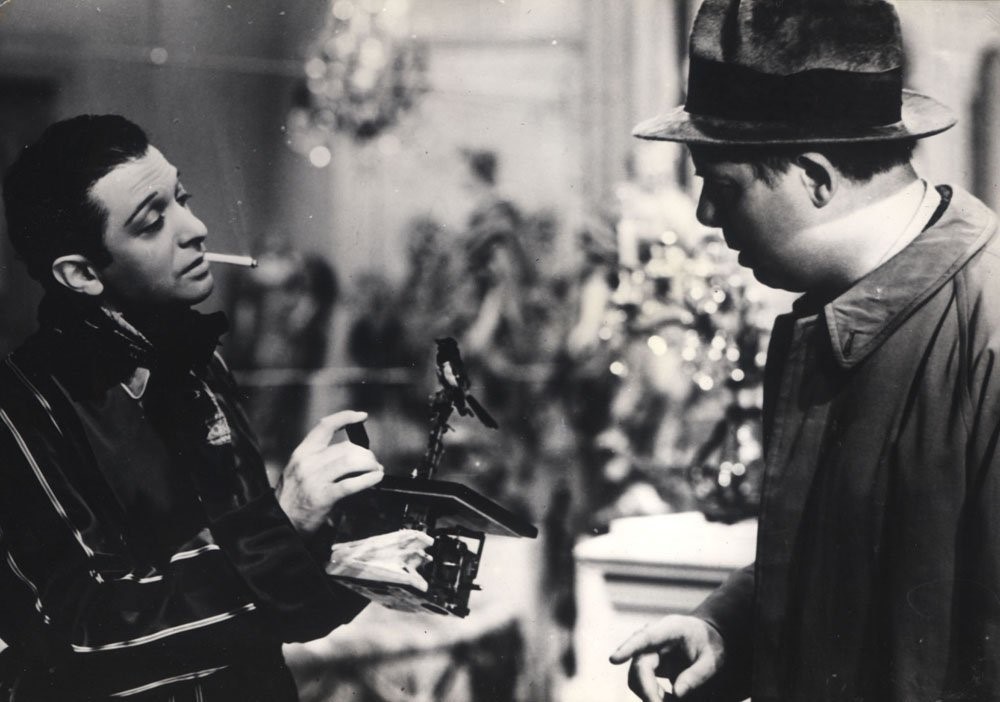CLASSIC MOVIE SUNDAYS: The Rules of the Game (1939)
Marcel Dalio and Roland Toutair in “The Rules of the Game” (1939). Retrieved from https://www.imdb.com/title/tt0031885/mediaviewer/rm883601920
Georgios Merkouris / April 7, 2019
( 4 min read )
The Rules of the Game (1939)
Director: Jean Renoir
Runtime: 110 min
Starring: Nora Gregor, Paulette Dubost, Marcel Dalio, Roland Toutain, Jean Renoir, Pierre Nay, Julien Carette, Gaston Modot, Pierre Magnier, Leon Larive, Henri Cartier Bresson etc.
“People fought during the screenings and there were even reports of individuals trying to set movie theatres on fire. ”
Expectations for “The Rules of the Game” couldn’t have been higher. Fresh off of a string of successful and beloved films, lauded director Jean Renoir wanted his next film to be "a precise description of the bourgeois of our age." This was meant to be a comedy that would relieve the director’s mind from the pessimism arising at the onset of another World War. When it first premiered, however, the reception was egregious. People fought during the screenings and there were even reports of individuals trying to set movie theatres on fire. The Vichy government banned the film, considering it to be making a mockery of French society and its values. Moreover, the original cut was ultimately destroyed when the Allied forces bombed the house in which it was stored. From there, various cuts of it were found in different places, the film underwent several restorations, and, thankfully, the versions available today manage to come close to the director’s original vision.
Octave (Jean Renoir): “The awful thing about life is this: Everybody has their reasons.” Retrieved from: https://www.imdb.com/title/tt0031885/mediaviewer/rm2013449984
“The premise is fairly simple: French socialites and their servants gather in the country estate of Marquis Robert de la Cheyniest (Marcel Dalio, in perfect form).”
“The Rules of the Game” is often considered the greatest film ever made. Its reputation has steadily grown over the years, praising it to oblivion, which makes it a daunting task for casual filmgoers to approach. It is important to let go of any preconceptions and misgivings one might have about it and simply try engaging with what is actually presented on the screen. The premise is fairly simple: French socialites and their servants gather in the country estate of Marquis Robert de la Cheyniest (Marcel Dalio, in perfect form). Their relationships unfold and the contrast between the upstairs aristocrats and the downstairs “help” that tries to emulate them within their limited means is sharply drawn. Slowly, the events take a drastic turn, reaching a point where one of the guests is murdered. The characters ponder over the real life consequences of their actions and how they affect others.
A scene between Octave (Jean Renoir), and Marquis Robert de la Cheyniest (Marcel Dalio) Retrieved from:https://www.imdb.com/title/tt0031885/mediaviewer/rm2424665600.
“They are portrayed as charming and eccentric, in spite of the fact that they engage in morally reprehensible actions.”
The secret appeal for this film, however, lies in the way it presents itself: a series of gossip, lustful escapades, and violent confrontations. It is essentially a comedy of manners. Characters behave irrationally, full of illusions about the world that surrounds them, surrendering themselves to their most vile impulses. It is often viewed as a critique of French society at the time but it certainly doesn’t feel that way. Renoir, himself an avowed leftist, shows deep compassion for all of his characters. They are portrayed as charming and eccentric, in spite of the fact that they engage in morally reprehensible actions. The movie seems more of an elegy on a disintegrating European society, especially since it was filmed at the onset of World War II. It simultaneously mocks these social mores or “rules” by which society is constrained, as well as relish in them. The intrigue comes from the elusive nature of the work. One cannot simply watch the film, it has to be absorbed and felt on a deeper level.
Marcel Dalio, Nora Gregor, Pierre Magnier, Jean Renoir and Roland Toutain in “The Rules of the Game” (1939). Retrieved from: https://www.imdb.com/title/tt0031885/mediaviewer/rm1191366400
“This technique was widely popularized by Orson Welles’ “Citizen Kane”, inspired by Renoir’s direction.”
The technical aspects are equally fascinating. Renoir pioneered deep focus cinematography, meaning the use of lighting and camera lenses to make audiences able to see both the foreground and background. Various famous scenes enveloping in the chateau are choreographed in a way that two events are transpiring simultaneously, one in the front of the screen and the other in the background, until they inhabit the same space. All subplots advance at the same time. This technique was widely popularized by Orson Welles’ "Citizen Kane", inspired by Renoir’s direction. In addition, the camera glides through the scenes in an effortless manner, merely observing the discussions that are happening. The audiences act as voyeurs, whereas the characters give off the impression that they would behave somewhat differently if they knew they were being watched. This is done through excellent acting. Renoir paid attention to the faces of his performers, so that their facial expressions could reflect the major themes of the film itself.
Whatever that could be said about the film would be an understatement. Even after repeated viewings, one can always find some new aspect previously unnoticed to appreciate. It has inspired generations of filmmakers, like Martin Scorsese, Ingmar Bergman, Robert Altman, Satyajit Rai, Francois Truffaut and countless others. It was the pinnacle of avant-garde filmmaking then and it is still as fresh and biting today, eighty years after its release.







